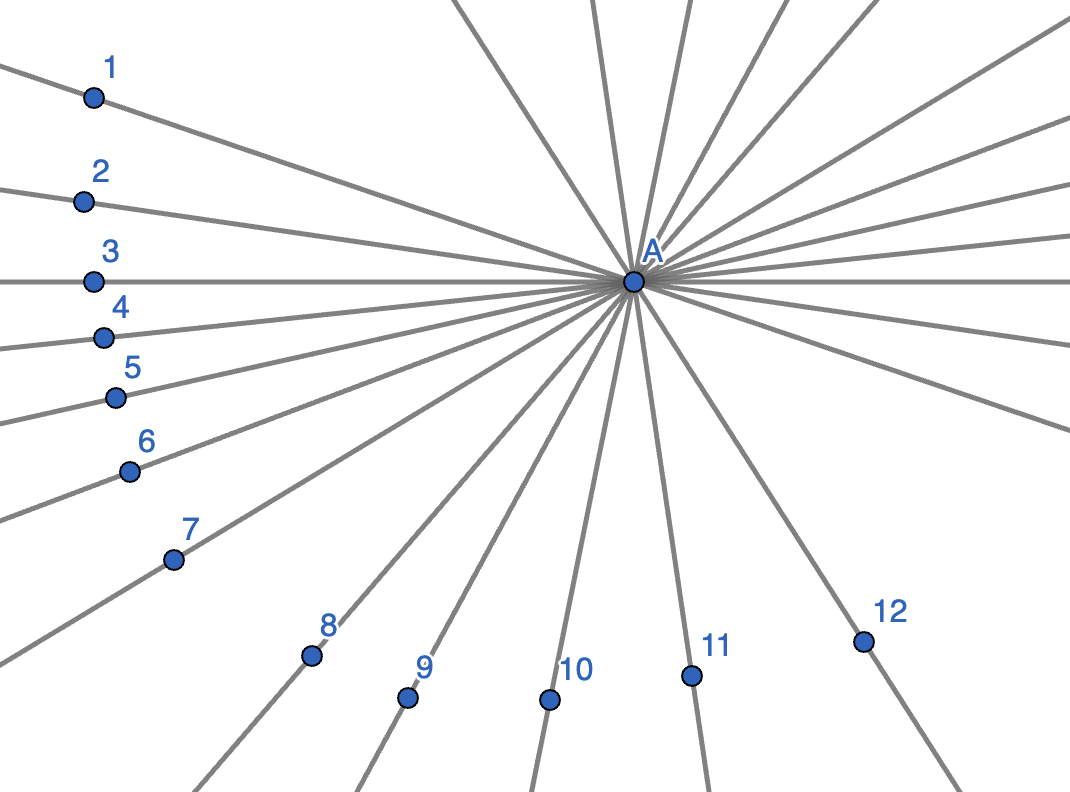Problems
Prove that one can tile the whole plane without spaces and overlaps, using any non self-intersecting quadrilaterals of the same shape. Note: quadrilaterals might not be convex.
Let \(n\) be a positive integer. We denote by \(s(n)\) the sum of the divisors of \(n\). For example, the divisors of \(n=6\) are \(1\), \(2\), \(3\) and \(6\), so \(s(6)=1+2+3+6=12\). Prove that, for all \(n\ge1\), \[\sum_{k=1}^ns(k)=s(1)+s(2)+...+s(n)\le\frac{\pi^2}{12}n^2+\frac{n\log n}{2}+\frac{n}{2}.\]
It is impossible to completely tile the plane using only regular pentagons. However, can you identify at least three different types of pentagons (each with at least two different corresponding sides AND angles) that can be used to tile the plane in three distinct ways? Here essentially different means the tilings have different patterns.
Draw how to tile the whole plane with figures, made from squares \(1\times 1\), \(2\times 2\), \(3\times 3\), where squares are used the same number of times in the design of the figure.
Consider a line segment of length \(3m\). Jack chose \(4\) random points on the segment and measured all the distances between those \(4\) points. Prove that at least one of the distances is less than or equal to \(1m\).
Twelve lines are drawn on the plane, passing through a point \(A\). Prove that there are two of them with angle less than \(17^{\circ}\) between them.

Inside a square of area \(6\), there are three polygons, each of area \(3\). Show that some two of these polygons overlap and the area of the overlap is at least \(1\).
A Wimbledon doubles court is \(78\)ft\(\times36\)ft. After a long practice match, there were \(79\) tennis balls in the court area. Show that some two of the balls were at most \(6\sqrt{2}\)ft away from each other.
There are \(n\) ambassadors, each from a different country, sitting at a round table. The flag for each country is on the table, but unfortunately the flags have been mixed up. As a result each ambassador has a wrong flag in front of them, while their flag is in front of some other ambassador. Show that you can rotate the table with the flags on it, in such a way that at least two ambassadors will have correct flags in front of them.
We have an infinitely large chessboard, consisting of white and black squares. We would like to place a stain of a specific shape on this chessboard. The stain is a bounded and connected shape with an area strictly less than the area of one square of the chessboard. Show that it is always possible to place the stain in such a way that it does not cover a vertex of any square.